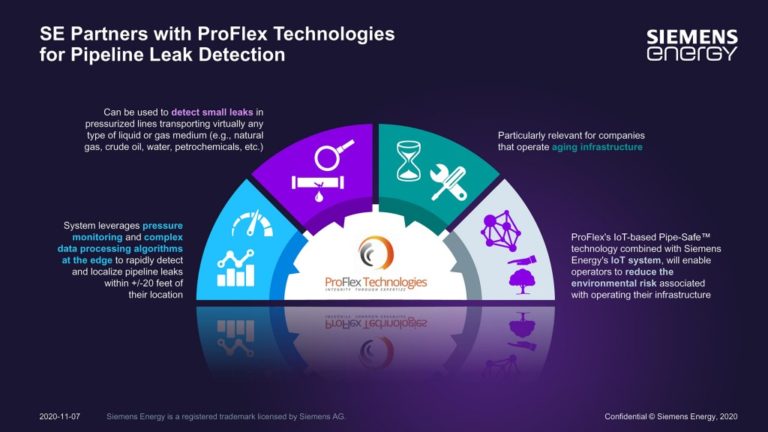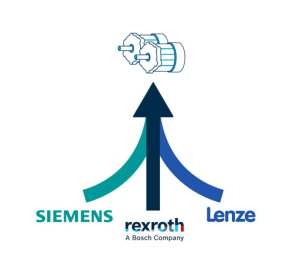Siemens Energy partners with ProFlex Technologies to provide IoT-based pipeline leak detection

Siemens Energy partners with ProFlex Technologies to provide IoT-based pipeline leak detection. (Image source: Siemens Energy AG)
As part of the agreement, Siemens Energy gains exclusive access to ProFlex Technologies’ digital Pipe-Safe advanced leak detection technology. The technology, combined with Siemens Energy’s Internet of Things (IoT) system, will enable operators to reduce the environmental risk associated with operating their infrastructure by minimizing unplanned releases of product into the ecosystem.
The solution leverages remote pressure monitoring and complex data processing algorithms to rapidly detect and localize pipeline leaks within +/-20 feet of their location. It is particularly relevant for companies that operate aging infrastructure, enabling detection of small leaks in pressurized lines transporting virtually any type of liquid or gas medium (e.g., natural gas, crude oil, water, petrochemicals, etc.). Specific applications include long-distance oil and gas transmission lines (i.e., multi-node systems); production gathering networks at well sites; and offshore production risers.
“The use of Siemens Energy’s IoT technology, together with the Pipe-Safe technology, is a powerful combination that will help operators safely operate their assets and mitigate against the impact of unplanned product release through the early detection of leaks,” said Nico van Rensburg, Head of Onshore Solutions’ Digital Solutions and Portfolio Innovation at Siemens Energy. “The IoT-based leak detection solution uses highly sensitive pressure sensors connected to pipelines at key locations to monitor internal pressure continuously.”
Using complex data processing algorithms at the monitoring nodes, pressure pulses created by the leak are identified, and leak location can be accurately determined. This data can be transmitted to mobile devices or back to a central location using the latest cloud-based technology. Immediate actions can be taken to repair the leak. The IoT-based approach has broad applicability and is suitable for use with any asset type, including new installations and existing assets.
“Combining state of the art remote pressure monitoring and data processing technologies within Siemens Energy’s IoT systems represents a cost-effective leak detection solution that’s easy to install and requires little ongoing human intervention,” said Stuart Mitchell, Managing Partner, ProFlex Technologies. “The solution provides peace of mind to customers that any unexpected damage to their pipeline can be immediately detected and located, significantly reducing the volume of any liquid spill and the associated impact to ongoing operation.”
“The Pipe-Safe solution from Pro-Flex Technologies complements our existing IoT digital service offerings that, with the use of analytics, improve asset efficiency and safety with greater operational transparency,” said Jennifer Hooper, Senior Vice President, Industrial Applications Solutions for Siemens Energy. “This collaboration represents yet another step on our journey to helping the industry enhance sustainability by providing solutions that reduce emissions and minimize environmental impacts.”
The spontaneous leak detection as-a-service is immediately available from Siemens Energy, with the first implementations expected early next year.
Source: Siemens Energy AG







